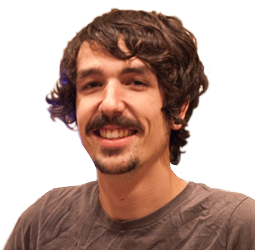-
Call Us Toll Free888-528-9703
-
Local/International (+1)919-682-5552
- Call Us! Toll Free! 888-528-9703
- Local / International (+1) 919-682-5552

Oberheim TEO-5 Desktop Module From Sequential
Compact Creativity: Redefine Your Studio with the TEO-5 Desktop Module
$1,399.00
"Experience the Difference"
 Payments as low as $31/mo.
Payments as low as $31/mo.
Manufacturer's Description from Sequential
The TEO-5 desktop module is a compact powerhouse for musicians and producers seeking the iconic Oberheim sound in a space-saving format. This new addition to the Oberheim synthesizer family delivers all the same signature sounds and synthesis features as the acclaimed TEO-5 keyboard.
Featuring genuine analog oscillators and the legendary SEM™ multimode filter, the TEO-5 desktop module enables users to recreate the classic Oberheim sounds that have defined music for decades. With extensive modulations, including linear and through-zero FM, and modern effects, TEO-5 opens up new sonic possibilities.
Designed for intuitive use, the TEO-5 desktop module retains the knob-based experience of its keyboard counterpart. All synthesis features are easily accessible from the top panel, allowing for real-time adjustments and fine-tuning of sounds. This hands-on approach ensures musicians can quickly achieve the perfect Oberheim tone.
Ideal for those with limited studio space, the TEO-5 desktop module offers all the exceptional presets and sonic control of the keyboard version in a footprint less than half the size. Its compact design integrates seamlessly into any creative workflow, making it a versatile addition to any setup.

About Manufacturer
Sequential is helmed by legendary instrument designer and Grammy-winner Dave Smith, the original founder of Sequential Circuits in the mid-70s. Dave designed the Prophet-5, the world’s first fully-programmable polyphonic synth—and the first musical instrument with an embedded microprocessor.
Dave is generally known as the driving force behind the generation of the MIDI specification in 1981. It was Dave, in fact, who coined the acronym. In 1987 he was named a Fellow of the Audio Engineering Society (AES) for his continuing work in the area of music synthesis. After Sequential, Dave was President of DSD, Inc, an R&D division of Yamaha, where he worked on physical modeling synthesis and software synthesizer concepts. He then started the Korg R&D group in California, producing the Wavestation products and other technology.
He took over as President at Seer Systems and developed the first soft synth for Intel in 1994, followed by the first fully professional soft synth, Reality, released in 1997.
Realizing the limitations of software, Dave returned to hardware and started Dave Smith Instruments, which released the Evolver hybrid analog/digital synthesizer in 2002. Since then the Sequential product lineup has grown to include the Prophet X, Prophet Rev2, Prophet-6, OB-6, Pro 2, and Prophet 12 synthesizers, as well as the Tempest drum machine, co-designed with friend and fellow electronic instrument designer Roger Linn.
Dave is generally known as the driving force behind the generation of the MIDI specification in 1981. It was Dave, in fact, who coined the acronym. In 1987 he was named a Fellow of the Audio Engineering Society (AES) for his continuing work in the area of music synthesis. After Sequential, Dave was President of DSD, Inc, an R&D division of Yamaha, where he worked on physical modeling synthesis and software synthesizer concepts. He then started the Korg R&D group in California, producing the Wavestation products and other technology.
He took over as President at Seer Systems and developed the first soft synth for Intel in 1994, followed by the first fully professional soft synth, Reality, released in 1997.
Realizing the limitations of software, Dave returned to hardware and started Dave Smith Instruments which released the Evolver hybrid analog/digital synthesizer in 2002. Since then the DSI product lineup has grown to include the Prophet 12, Prophet ’08, Pro 2, Mopho, and Tetra synths, as well as the Tempest drum machine, co-designed with friend and fellow electronic instrument designer Roger Linn.
Specifications
- OSCILLATORS
- 5-Voice VCO/VCF-based polysynth
- 2x VCOs and sub oscillator per voice
- Simultaneously selectable waveshapes for each oscillator: triangle, saw, variable pulse
- Oscillator 1 syncs to Oscillator 2
- Dedicated front-panel X-Mod control for through-zero FM
- Switchable key tracking per oscillator
- White noise generator accessible in pre-filter mixer
- STATE VARIABLE FILTER
- Classic SEM filter with selectable Band-Pass mode
- State knob continuously morphs from Low-Pass through Notch to High-Pass
- Bi-polar filter envelope amount
- Velocity modulation of envelope amount
- Keyboard tracking
- FILTER ENVELOPE
- Five-stage (DADSR) envelope generator
- Velocity modulation of envelope amount
- Freely assignable modulation destinations
- AMPLIFIER ENVELOPE
- Five-stage (DADSR) envelope generator
- Velocity modulation of envelope amount
- 2 LOW FREQUENCY OSCILLATORS
- Five wave shapes: triangle, sawtooth, reverse sawtooth, square, and random (sample and hold)
- LFO tempo sync
- Initial amount setting
- Freely assignable modulation destinations
- MODULATION MATRIX
- 19 slots x 19 sources x 64 destinations
- Flexible matrix design where almost any mod route is possible, including audio rate sources and destinations
- VINTAGE KNOB
- Recreates vintage synth characteristics by adding voice-to voice variations in component behavior
- AFTERTOUCH
- Channel (mono) aftertouch with bi-polar amount
- Freely assignable modulation destinations
- CLOCK
- Master clock with tap tempo
- BPM control and display
- MIDI clock sync
- ARPEGGIATOR
- Selectable note value: 16th note, 8th note triplet, 8th note, dotted 8th note, quarter note
- One, two, or three octave range
- Up, down, up/down, random, and assign modes
- SEQUENCER
- Polyphonic step sequencer with up to 64 steps, including ties and rests
- EFFECTS
- One dedicated reverb with damping, pre-delay, decay and tone
- One multi-effect with stereo delay, BBD delay, tape delay, chorus, flanger, Oberheim phase shifter and ring modulator emulations, vintage rotating speaker, distortion, high-pass filter and Lo-Fi
- Dedicated Overdrive effect
- PERFORMANCE CONTROLS
- Hold switch latches held notes on
- Polyphonic portamento (glide)
- Unison (monophonic) mode with configurable voice count, from one to all five voices, and key modes to control voice triggering priority
- Manual switch: when on, the front panel is live; what you see is what you hear
- PATCH MEMORY
- 256 user and 256 factory programs in 32 banks of 16 programs each
- Direct program access, including single-button access to the current set of 16 programs
- IN/OUT
- Left and right audio outputs (2 x 1/4” jack)
- Headphone output (stereo, 1/4” phone jack)
- MIDI in, out, and thru ports
- USB for bidirectional MIDI communication
- Volume expression pedal input
- Sustain footswitch input
- POWER
- IEC AC power inlet for internal power supply
- Operates worldwide on voltages between 100 and 240 volts at 50 to 60 Hz; 22 Watts maximum power consumption
- PHYSICAL SPECS
- 21" L x 7" W x 3.5" H (53.3 cm x 17.8 cm x 8.9 cm)
- Weight: 6.8 lbs. (3.08 kg)

















